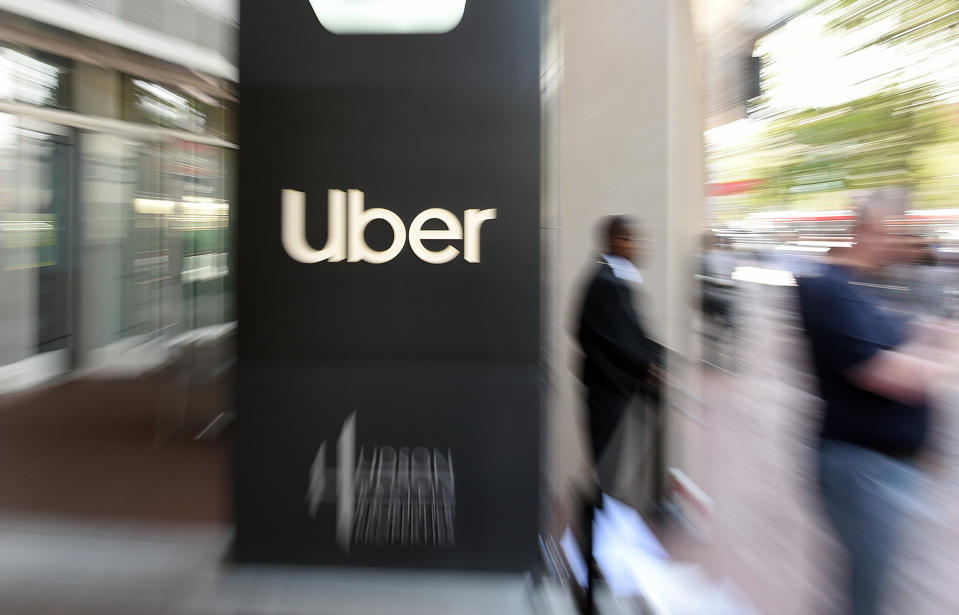Why it’s bad for investors when companies like Uber wait too long to go public
Tech companies such as Uber (UBER) are waiting too long to go public, suggests ANGI Homeservices (ANGI) CEO Brandon Ridenour.
Ridenour, who has run Angie’s List and HomeAdvisor parent ANGI Homeservices for nearly seven months, says the reason Wall Street investors are cautious regarding several of 2019’s notable tech IPOs like Uber and Lyft (LYFT) is that those businesses waited too long to go public. In waiting longer to IPO, these larger, unprofitable businesses appear riskier with less of a chance for significant returns for investors.
“The biggest factor is that we're letting these companies get much larger than they would have historically,” Ridenour tells Yahoo Finance. “I have to believe the risk to investors from their standpoint is much greater. You're not just going to grow your way out of it by growing to another 10x, which is what people used to somewhat expect within with an IPO and a smaller company.”
The waiting game
Looking at 2019 alone, the year is already proving to be notable for tech IPOs. However, equally as notable are the companies — Uber, Lyft, Pinterest (PINS) and Zoom Technologies (ZOOM) — which waited longer to go public than many tech companies during the dot-com bubble and in the years immediately following, due to much more venture capital available.
Indeed, for companies like Amazon (AMZN), Apple (AAPL) and Netflix (NFLX), all three went public within five years after they were founded, points out Sharespost principal analyst Alejandro Ortiz. Meanwhile, companies such as Uber, Lyft, Pinterest, which have seen their stock fluctuate since going public, all waited between seven and 10 years after they were founded, raising far more venture-backed capital and fetching stratospheric valuations. Businesses like Airbnb, Postmates, and Slack, which are expected to IPO later this year, also fit into this category of companies that have waited longer and raised hundreds of millions — and in some cases, billions — of dollars in venture capital.
As a result, investors on Wall Street may have less to gain by investing in these publicly-traded companies — and their cautiousness shows. Uber’s stock is down nearly 4% since it went public on May 10, while Lyft shares remain 31% lower than its IPO share price from March 28.
“Public investors could have benefited from the increase in valuation that private investors did,” adds Ortiz. “Thinking of the Uber story and its road to $76 billion as a private company, had the company gone public 5 years in instead of 10 years in, those public investors could have realized a lot of the growth.”

More work ahead
And while Ridenour calls Uber and Lyft “phenomenal” and “life altering” businesses he ultimately wants to succeed, the tech executive, like many analysts, says these companies have a lot of work cut out for them. To that end, Uber reported a first-quarter net loss on Thursday afternoon of $1.01 billion on revenues of nearly $3.1 billion — roughly in-line with Wall Street analysts’ expectations and the company’s estimates outlined in its amended S-1. Meanwhile, Lyft lost $1.14 billion during its first quarter with revenues of $776 million, surpassing Wall Street estimates for revenues but disappointing with higher-than-expected losses.
Ali Mogharabi, a senior equity analyst with Morningstar, now estimates the earliest both ride-hailing companies could be profitable is 2022, with Uber possibly closer to profitability because of its fast-growing Uber Eats food delivery service.
“If you look at the economics of many of the businesses, and they're not profitable, but they're burning cash at a high rate, I would be in the camp of hoping that everybody finds a way to survive, because I think they've been a tremendous benefit to consumers,” adds Ridenour.
Many analysts — and even wary investors — would agree, even if these companies’ prospects of profitability remain a point of frustration.
Follow Yahoo Finance on Twitter, Facebook, Instagram, Flipboard, SmartNews, LinkedIn,YouTube, and reddit.
More from JP:

 Yahoo Finance
Yahoo Finance 
